-
 Bitcoin
Bitcoin $106,754.6083
1.33% -
 Ethereum
Ethereum $2,625.8249
3.80% -
 Tether USDt
Tether USDt $1.0001
-0.03% -
 XRP
XRP $2.1891
1.67% -
 BNB
BNB $654.5220
0.66% -
 Solana
Solana $156.9428
7.28% -
 USDC
USDC $0.9998
0.00% -
 Dogecoin
Dogecoin $0.1780
1.14% -
 TRON
TRON $0.2706
-0.16% -
 Cardano
Cardano $0.6470
2.77% -
 Hyperliquid
Hyperliquid $44.6467
10.24% -
 Sui
Sui $3.1128
3.86% -
 Bitcoin Cash
Bitcoin Cash $455.7646
3.00% -
 Chainlink
Chainlink $13.6858
4.08% -
 UNUS SED LEO
UNUS SED LEO $9.2682
0.21% -
 Avalanche
Avalanche $19.7433
3.79% -
 Stellar
Stellar $0.2616
1.64% -
 Toncoin
Toncoin $3.0222
2.19% -
 Shiba Inu
Shiba Inu $0.0...01220
1.49% -
 Hedera
Hedera $0.1580
2.75% -
 Litecoin
Litecoin $87.4964
2.29% -
 Polkadot
Polkadot $3.8958
3.05% -
 Ethena USDe
Ethena USDe $1.0000
-0.04% -
 Monero
Monero $317.2263
0.26% -
 Bitget Token
Bitget Token $4.5985
1.68% -
 Dai
Dai $0.9999
0.00% -
 Pepe
Pepe $0.0...01140
2.44% -
 Uniswap
Uniswap $7.6065
5.29% -
 Pi
Pi $0.6042
-2.00% -
 Aave
Aave $289.6343
6.02%
Can I chase after breaking through the neckline? Where to set the stop loss?
A confirmed neckline break in crypto trading can signal a trend reversal, but traders should verify with volume, candlestick closes, and multiple time frames before entering.
Jun 17, 2025 at 06:08 am
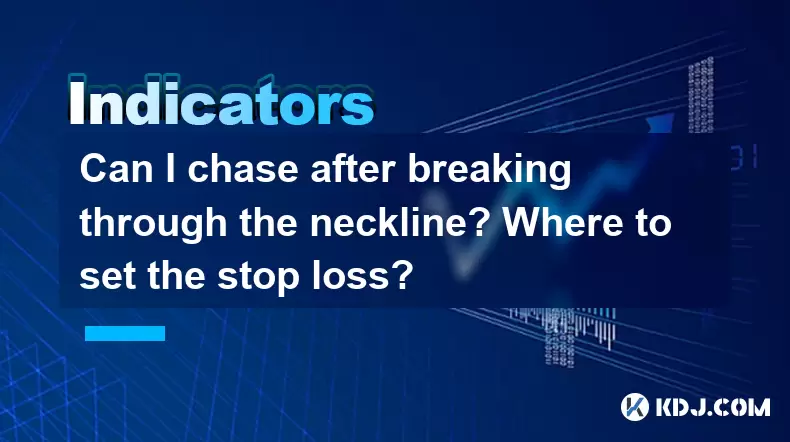
Understanding the Neckline Break in Cryptocurrency Trading
In technical analysis, especially within the cryptocurrency market, the concept of a neckline is crucial when identifying patterns such as the head and shoulders or its inverse. When price action breaks through the neckline, it often signals a potential reversal in trend. Traders frequently ask whether they should chase this breakout or wait for confirmation before entering a trade.
The key question revolves around timing — entering too early can result in false breakouts, while waiting too long might cause you to miss out on significant moves. The decision largely depends on your risk tolerance, trading strategy, and the strength of the breakout signal.
Chasing a breakout immediately after the neckline breaks is not inherently wrong, but it must be done with caution and proper risk management.
How to Confirm a Valid Neckline Break
Before deciding to chase the breakout, traders must verify that the neckline break is valid. Not all breakouts lead to strong trends; many are false signals caused by short-term volatility or manipulation in the crypto markets.
Here are key elements to confirm a genuine breakout:
- Candlestick close beyond the neckline: A simple touch of the line isn’t enough; look for a confirmed closing candle beyond the neckline.
- Volume surge: A real breakout usually comes with an increase in trading volume, indicating institutional or large player participation.
- Multiple time frame analysis: Check if the breakout holds across different time frames (e.g., 1-hour, 4-hour charts).
Only enter a trade when multiple indicators align to suggest a high probability of continuation after the neckline break.
Setting Stop Loss After Chasing the Breakout
Once you've decided to chase the breakout, the next critical step is setting an appropriate stop loss level. This helps protect your capital from sudden reversals or fakeouts.
There are several methods to determine where to place your stop loss:
- Below the neckline: If the breakout is bullish (price breaking above the neckline), placing the stop just below the broken resistance-turned-support level makes sense.
- Swing low placement: Identify the most recent swing low before the breakout and place the stop slightly below it.
- Percentage-based buffer: Use a fixed percentage (e.g., 2–5%) below the entry point to allow for normal price fluctuation.
A well-placed stop loss should balance protection and flexibility to avoid premature exits due to minor pullbacks.
Entry Strategies After Neckline Break
There are different ways to enter a trade after the neckline has been broken. Each method carries its own risk-reward profile:
- Immediate entry after breakout: This allows you to catch the move early but increases the chance of falling into a false breakout trap.
- Pullback entry: Wait for the price to retest the neckline as support/resistance before entering. This gives better risk-reward ratios.
- Moving average filter: Only enter if the price remains above a key moving average like the 20 EMA after the breakout.
Each trader should choose a method that fits their personal strategy and psychological comfort level.
Using a combination of these entry strategies can help reduce exposure to false breakouts while still capturing substantial moves.
Risk Management Considerations
Even with a solid entry and stop loss, risk management plays a pivotal role in whether chasing the breakout becomes profitable in the long run. Many traders fail not because they misread the chart, but because they ignore position sizing and emotional discipline.
Consider the following:
- Position sizing: Risk only a small percentage of your total capital (e.g., 1–2%) per trade.
- Reward-to-risk ratio: Aim for at least a 2:1 reward-to-risk setup before taking any trade.
- Emotional control: Don’t let fear or greed dictate your actions after entering a trade.
Effective risk management ensures longevity in trading, even if some breakout trades don’t work out as planned.
Frequently Asked Questions
Q: Can I use leverage when chasing neckline breakouts?
A: Yes, but with extreme caution. Leverage amplifies both gains and losses. It’s recommended to reduce leverage or avoid it altogether unless you have a strict risk control plan in place.
Q: How long should I hold a trade after entering on a neckline breakout?
A: That depends on your trading style. Day traders may exit within hours, while swing traders could hold for days. Always set profit targets based on historical volatility or Fibonacci extensions.
Q: What if the price retests the neckline multiple times after breaking through?
A: Multiple retests can indicate strong support/resistance levels forming. As long as the price doesn’t close below/above the neckline decisively, the original breakout thesis remains intact.
Q: Is it better to use limit orders or market orders when chasing a breakout?
A: Limit orders help control entry price but may miss the breakout entirely. Market orders ensure execution but can lead to slippage in volatile crypto markets. Using a stop-limit order placed slightly above the breakout level may offer a balanced approach.
Disclaimer:info@kdj.com
The information provided is not trading advice. kdj.com does not assume any responsibility for any investments made based on the information provided in this article. Cryptocurrencies are highly volatile and it is highly recommended that you invest with caution after thorough research!
If you believe that the content used on this website infringes your copyright, please contact us immediately (info@kdj.com) and we will delete it promptly.
- 2025-W Uncirculated American Gold Eagle and Dr. Vera Rubin Quarter Mark New Products
- 2025-06-13 06:25:13
- Ruvi AI (RVU) Leverages Blockchain and Artificial Intelligence to Disrupt Marketing, Entertainment, and Finance
- 2025-06-13 07:05:12
- H100 Group AB Raises 101 Million SEK (Approximately $10.6 Million) to Bolster Bitcoin Reserves
- 2025-06-13 06:25:13
- Galaxy Digital CEO Mike Novogratz Says Bitcoin Will Replace Gold and Go to $1,000,000
- 2025-06-13 06:45:13
- Trust Wallet Token (TWT) Price Drops 5.7% as RWA Integration Plans Ignite Excitement
- 2025-06-13 06:45:13
- Ethereum (ETH) Is in the Second Phase of a Three-Stage Market Cycle
- 2025-06-13 07:25:13
Related knowledge
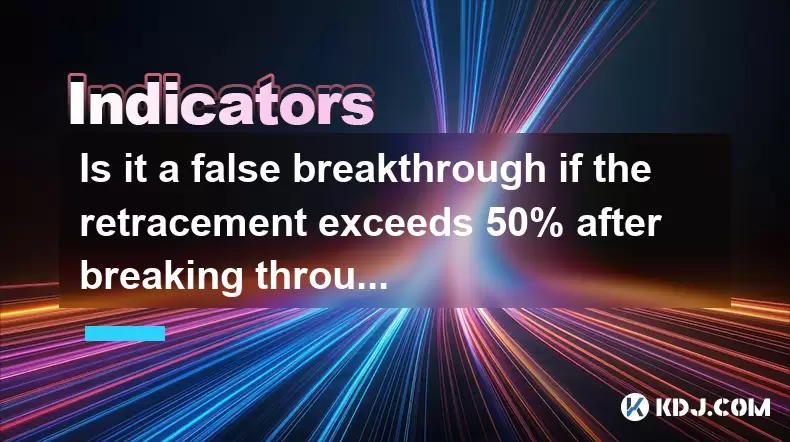
Is it a false breakthrough if the retracement exceeds 50% after breaking through the platform?
Jun 17,2025 at 08:01pm
Understanding Breakouts and Retracements in Cryptocurrency TradingIn cryptocurrency trading, breakouts refer to when the price of an asset moves beyond a defined support or resistance level with increased volume. These events often attract traders looking to capitalize on momentum. However, not all breakouts are valid. A false breakout, also known as a ...
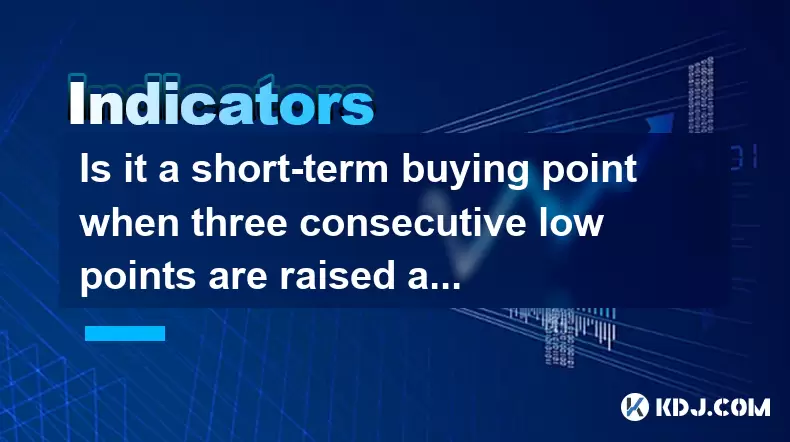
Is it a short-term buying point when three consecutive low points are raised at the 30-minute level?
Jun 17,2025 at 08:14pm
Understanding the Three Consecutive Low Points PatternIn technical analysis, identifying patterns in price movements is essential for making informed trading decisions. One such pattern that traders often observe is when three consecutive low points are raised within a specific timeframe — in this case, the 30-minute chart. This pattern suggests a poten...
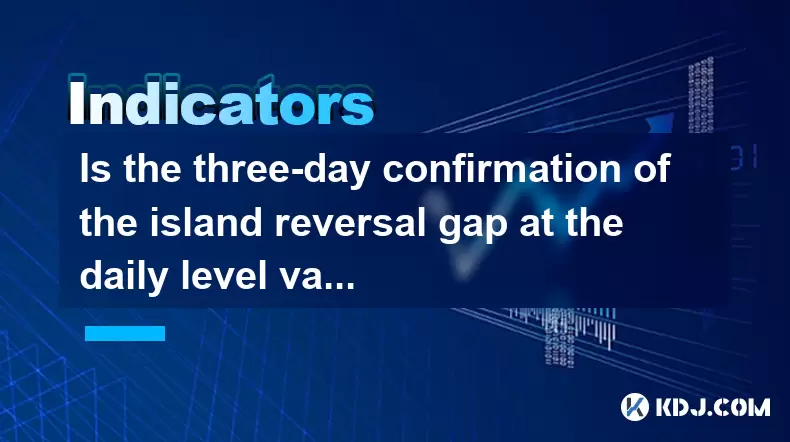
Is the three-day confirmation of the island reversal gap at the daily level valid?
Jun 17,2025 at 09:49pm
Understanding the Island Reversal Gap in Cryptocurrency TradingIn cryptocurrency trading, technical analysis plays a pivotal role in identifying potential market reversals. One such pattern is the island reversal gap, which signals a possible trend change. This pattern consists of a gap followed by a period of consolidation or sideways movement and then...
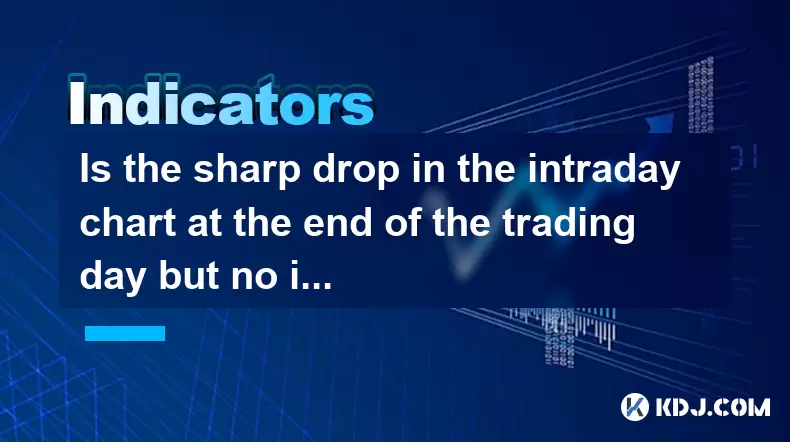
Is the sharp drop in the intraday chart at the end of the trading day but no increase in volume a trap to sell?
Jun 17,2025 at 08:35pm
Understanding the Intraday Chart DynamicsIn cryptocurrency trading, intraday charts are widely used by traders to analyze short-term price movements. These charts display price fluctuations within a single trading day and help traders make informed decisions based on real-time data. One common phenomenon observed is a sharp drop in price near the end of...
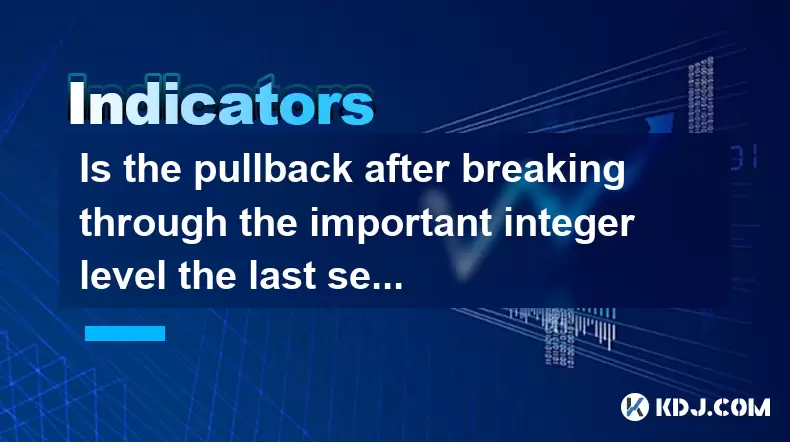
Is the pullback after breaking through the important integer level the last selling point?
Jun 17,2025 at 08:57pm
Understanding Important Integer Levels in Cryptocurrency TradingIn the world of cryptocurrency trading, certain price levels hold significant psychological and technical importance. These are commonly referred to as important integer levels—such as $10,000 for Bitcoin or $1,000 for Ethereum. These levels often act as strong support or resistance zones d...
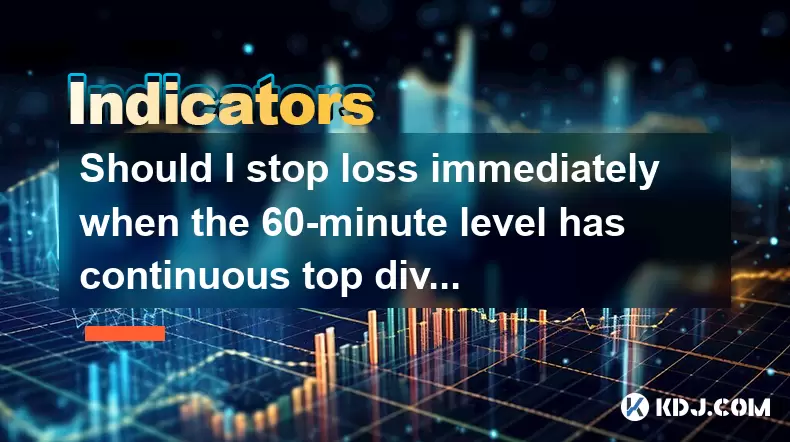
Should I stop loss immediately when the 60-minute level has continuous top divergence?
Jun 17,2025 at 05:28pm
Understanding Top Divergence in the 60-Minute ChartIn cryptocurrency trading, top divergence refers to a technical signal where the price of an asset makes higher highs while the indicator (often RSI or MACD) makes lower lows. This is commonly interpreted as a sign of weakening momentum and potential reversal. When this occurs on the 60-minute chart, it...

Is it a false breakthrough if the retracement exceeds 50% after breaking through the platform?
Jun 17,2025 at 08:01pm
Understanding Breakouts and Retracements in Cryptocurrency TradingIn cryptocurrency trading, breakouts refer to when the price of an asset moves beyond a defined support or resistance level with increased volume. These events often attract traders looking to capitalize on momentum. However, not all breakouts are valid. A false breakout, also known as a ...

Is it a short-term buying point when three consecutive low points are raised at the 30-minute level?
Jun 17,2025 at 08:14pm
Understanding the Three Consecutive Low Points PatternIn technical analysis, identifying patterns in price movements is essential for making informed trading decisions. One such pattern that traders often observe is when three consecutive low points are raised within a specific timeframe — in this case, the 30-minute chart. This pattern suggests a poten...

Is the three-day confirmation of the island reversal gap at the daily level valid?
Jun 17,2025 at 09:49pm
Understanding the Island Reversal Gap in Cryptocurrency TradingIn cryptocurrency trading, technical analysis plays a pivotal role in identifying potential market reversals. One such pattern is the island reversal gap, which signals a possible trend change. This pattern consists of a gap followed by a period of consolidation or sideways movement and then...

Is the sharp drop in the intraday chart at the end of the trading day but no increase in volume a trap to sell?
Jun 17,2025 at 08:35pm
Understanding the Intraday Chart DynamicsIn cryptocurrency trading, intraday charts are widely used by traders to analyze short-term price movements. These charts display price fluctuations within a single trading day and help traders make informed decisions based on real-time data. One common phenomenon observed is a sharp drop in price near the end of...

Is the pullback after breaking through the important integer level the last selling point?
Jun 17,2025 at 08:57pm
Understanding Important Integer Levels in Cryptocurrency TradingIn the world of cryptocurrency trading, certain price levels hold significant psychological and technical importance. These are commonly referred to as important integer levels—such as $10,000 for Bitcoin or $1,000 for Ethereum. These levels often act as strong support or resistance zones d...

Should I stop loss immediately when the 60-minute level has continuous top divergence?
Jun 17,2025 at 05:28pm
Understanding Top Divergence in the 60-Minute ChartIn cryptocurrency trading, top divergence refers to a technical signal where the price of an asset makes higher highs while the indicator (often RSI or MACD) makes lower lows. This is commonly interpreted as a sign of weakening momentum and potential reversal. When this occurs on the 60-minute chart, it...
See all articles

























































































